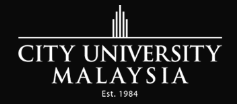The Launching of I-Card for International Students in Malaysia
June 27, 2014 | Editor's DeskSpecial Announcement
"THE LAUNCHING OF I-CARD FOR INTERNATIONAL STUDENTS IN MALAYSIA"
By YAB Tan Sri Dato'Hj. Muhyiddin bin Hj. Mohd. Yassin
The Honorable Deputy Prime Minister
on 26 June 2014
The I-Card is an identification card for international student which contains student information such as student name, date of birth, passport number, information institutions, international student pass expiry date and photo. This I-Card will be issued by the Immigration Department of Malaysia thorugh the One-Stop Center Education Malaysia Global Services (EMGS) with effect from July 1, 2014 for the purpose of new international students pass applications for entry and the renewal of pass application. This card will be used as a valid travel document for international students in Peninsular Malaysia.
KEYNOTE SPEECH
YAB TAN SRI DATO' HAJI MUHYIDDIN BIN HAJI MOHD YASSIN THE HONOURABLE DEPUTY PRIME MINISTER MALAYSIA
"THE LAUNCHING OF I-CARD FOR INTERNATIONAL STUDENTS"
26 June 2014 (Thursday) One World Hotel Bandar Utama City Centre Petaling Jaya, Selangor
Assalamulaikum Warahmatullahi Wabarakatuh and Salam 1 Malaysia.
- First of all, I hope to take this opportunity to thank the organisers, the Ministry of Home Affairs and Ministry of Education, as well as Education Malaysia Global Services (EMGS), for their efforts in organising and inviting for me to speak at this crucial event. It gives me great pleasure to be here today at the launching of I-Card for International Students in Malaysia.
Ladies and gentlemen,
The past and present of Private Higher Education Institutions (PHEIs) in Malaysia
Education is indeed an instrument to promote national unity, social equality and economic growth. Realising this, the Malaysian government invests heavily on education and human resource development. With an average sum of 15.5 percent of the total annual budget dedicated to this end, the government hopes to realize the vision of becoming a developed nation by the year 2020.
Over the years, like in many other countries, higher education in Malaysia has undergone massive expansion and transformation due to the increasing social demand brought about by the democratisation of education and the growing affluence of Malaysian society and is also perceived as the catalyst for social mobility, human capital development and economic growth, which altogether means one thing – education is the engine that drives nations forward.
In retrospect, the government was the main provider of higher education. When the idea to privatize higher education was first conceived, the objective was to address to the pressing challenge our nation faced due to the 1997 Asian economic turmoil. During that difficult time, the Malaysian government encouraged the privatization of higher education and allowed the establishment of foreign branch campuses. Furthermore, the government also facilitated the collaboration of Malaysian private higher education institutions (PHEI) with recognized foreign universities for the twinning programs. These efforts aimed at increasing the accessibility and equity to higher education and promoting Malaysia as a lucrative market for higher education.
Since then, the private higher education in Malaysia has undergone extensive changes. Over the two decades, private higher education also expanded immensely, with the number of PHEIs increased more than four-fold from 156 institutions in 1992 to 707 in 2002. Today we have 533 PHEIs including universities owned by GLCs, foreign university branch campuses, university colleges and colleges, respectively. The initiative has proven to be effective; the total number of students enrolled at the tertiary level has more than doubled over the past two decades. From 230,000 students in 1990, the number of our graduates has significantly increased to more than one million today. This stands not only as a result, but also an evidence of our shared dedication for the betterment of the country.
Distinguished Guests,
The internationalization of Malaysian Higher Education
The internationalization of Malaysia higher education sector is indeed an important initiative for Malaysia to position itself as a high income and developed country by 2020.
Malaysia is acknowledged to be among the preferred destinations for international students to pursue their studies. The range of colleges, university colleges and universities that offer both value for money and quality education, coupled with the richness of culture and stable governance have together formed a unique ambience to attract students to pursue higher education in this nation.
The strength of Malaysia's internationalization owes its origin to the Transnational Higher Education (TNE). Taking its root during the economic crisis, TNE is designed to fulfill the demand for foreign degrees and to overcome the problem of affordability. A lot has been achieved since then, and today, the TNE initiative has managed to offer a wealth of programs, ranging from twinning and credit transfer programmes to external degree and distance learning.
The Future Scenario
The success of the Millennium Development Goals in education has created an unprecedented demand for post-secondary education. Governments have invested heavily in early childhood and secondary education, resulting in a bulge of qualified learners and frequently inadequate provision available to meet demand. Demand for places in higher education far outstrips supply of available seats globally.
In many emerging economies the demand can be 20 to 50 per cent higher than places available in public institutions. It is predicted that the demand for higher education worldwide will have expanded from 97 million students in 2000 to over 262 million students by 2025. It was estimated that the private education market in 2006 approached US$400 billion worldwide and that this would continue to grow as the sector matures, particularly in emerging economies.
The need for a greater supply of technical and vocational education and training is an area attracting increasing attention, with the recognition of a need for increasing investment in this sector. Governments are recognizing that investing in post-secondary education at all levels can contribute to a more skilled and knowledgeable workforce, but at the same time, it is coming under considerable pressure to respond to the financial crises through investment in other sectors. Government funding is simply inadequate to meet the growth in demand for education at all levels and thus, non-governmental provision is expanding. The growth of PHEIs on a regional basis, estimates that approximately 30 per cent of global higher education enrolments are now in private sector institutions. Asia and Latin America show the greatest growth ranging up to 80 per cent in some countries, while Western Europe charts relatively smaller shares of private providers.
On financial mechanisms from the perspectives of the various stakeholders including government, entrepreneurs, philanthropists and students/parents, perhaps Public-Private Partnerships (PPPs) is an approach which is gaining considerable traction globally. Given the current fiscal constraints, governments are exploring more vigorously the options available to them through partnerships with the private sector.
Distinguished Guests,
Big Ideas and Challenges
The current initiative conducted by the Ministry of Education is to produce Malaysian Education Blueprint for Higher Education Strategic Framework (2015-2025). This initiative is devised by taking into consideration the research outputs carried out by a research team on evaluation and assessment of the existing strategic plan. The 11 primary objectives that we have gathered from the research are the need for us to achieve, among many, empowered governance, financial sustainability, higher education excellence, holistic entrepreneurial graduates, innovation ecosystem and higher education delivery transformation.
The aftermath of this initiative will be a significantly different higher education industry landscape 15 years from now. To aid this motive, I humbly request for private higher education institutions to continue the critical assessment of the viability of their institution's current business model, develop a vision of what a future model might look like, and develop a broad transition plan. Regardless of the path chosen, private higher education institutions will need to align new directions to their institution's core purpose and values.
According to UNESCO report, Malaysia is currently ranked the world's 11th most preferred study destination. TO further strengthen this position, the Ministry of Education has established Education Malaysia Global Services as a one-stop centre for the international students' admission to Malaysian higher education institutions and for promoting Malaysia as a global education destination providing high quality programmes of international standards.
The Launching of I-Card for International Students
When, the government embarked on the agenda to make Malaysia as an education hub, we realize that the country will indeed face great challenges in tailoring the technology and management to match the pool of students coming to the country. On this note, I am pleased to witness the concerted effort between ministries and agencies in handling these challenges.
I foresee the I-Card for the International Students, with its emphasis on security as a strategic effort to improve the management of foreign students in Malaysia, which portrays our responsiveness towards the need and welfare of our international students.
The I-Card is an identification card for international student which contains student information such as student name, date of birth, passport number, information institutions, international student pass expiry date and photo. This I-Card will be issued by the Immigration Department of Malaysia thorugh the One-Stop Center EMGS with effect from July 1, 2014 for the purpose of new international students pass applications for entry and the renewal of pass application. This card will be used as a valid travel document for international students in Peninsular Malaysia.
Conclusion
With the spirit to attract more international students to study in Malaysia, the tasks and responsibilities to ensure that the students are of high quality and 'genuine' remains a great challenge to us as a nation.
I am aware of the hard work that had been placed by all various ministries and industries in supporting our national agenda to be the preferred destinations for international students to pursue their education and positioning the nation as a global player and I would like to continue seeing the support and commitment in years ahead. The effort towards building a better nation is a continuous struggle, a struggle that is based on the realization that it is an innate, compulsory task of each and every citizen to strive for the betterment of this blessed land we call home.
Once again, I thank the Ministry of Home Affairs, Minsitry of Education and Education Malaysia Global Services for organizing this important event.
On that note, ladies and gentlemen, it is my pleasure to officially launch the International Student Card, I-Card.
Thank you!
Wabillahitaufik Walhidayah Wassalamualaikum Warahmatullahi Wabarakatuh.
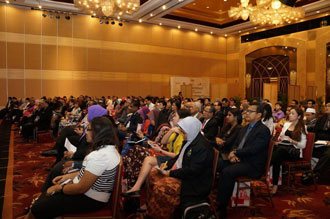
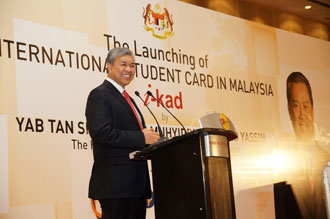
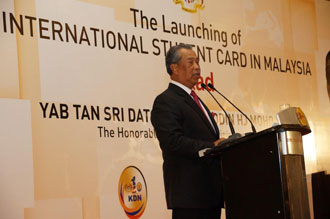
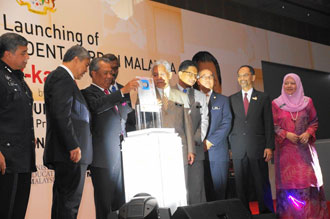
.jpg)
-ok.jpg)
.jpg)
-ok.jpg)
-ok.jpg)
View Other categories: NATIONAL | CAMPUS | ACHIEVEMENT | EDITOR'S DESK














